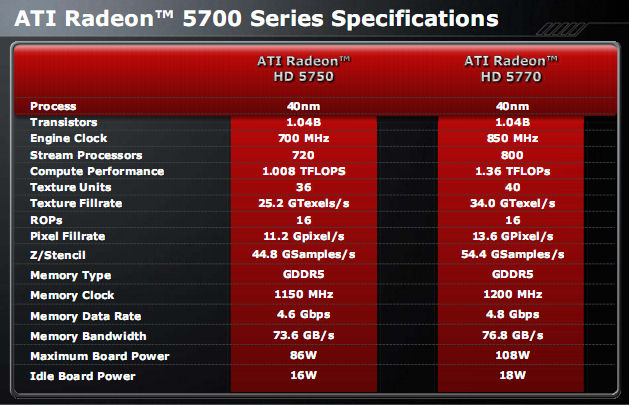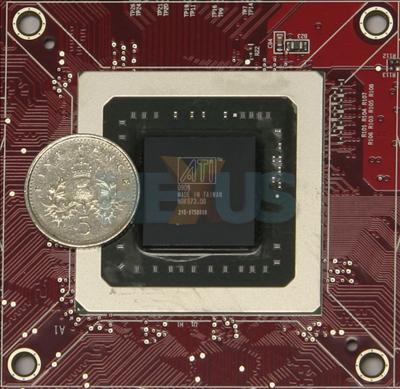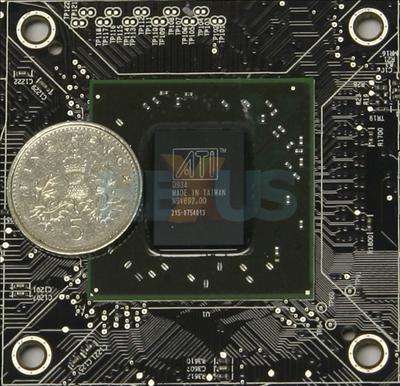5770 vs. 5750. To die for

Producing over 1TFLOPs of compute performance each, shading power is good, and similar to the Radeon HD 4870/4890 GPUs'.
In order to make the die-size as small and economic as possible, minimising costs, AMD's opted for a 128-bit-wide memory bus that may prove to be the Achilles Heel of the two mid-range cards when set to render high-resolution, super-high IQ.
The multimedia feature-set continues to be strong, following on from Radeon HD 5800. There's bit-stream support audio for TrueHD and DTS-HD Master Audio, as well as 8-channel LPCM.
The multi-monitor Eyefinity support is carried over, as well, although cards will be 'limited' to three outputs - comprising of, we expect, dual-link DVI, HDMI, and DisplayPort.
Both GPUs will be outfitted with 1,024MB of GDDR5 memory in the first instance, and we should see 512MB-equipped cards in a few weeks' time, at a lower price-point, of course.
Talking price, the latest word on the street is that the HD 5770 will etail for £125 in the UK, whilst the slower HD 5750 will be available for £109. We'll evaluate the bang4buck in due course.
To die for
Continuing the discussion on small dies that lower production costs, here's how the GeForce GTX 260, Radeon HD 4890 and Radeon HD 5770 stack up against a five-pence piece.
Whilst undeniably large, the GeForce GTX 260's die isn't quite as massive as the heatspreader. Putting it into numbers, the best-guess we have is around 470mm².
Radeon HD 4890 is built on a 55nm process and is much smaller, coming in at around 280mm².
Our measurements indicate that the HD 5770's die measures 15mm x 12mm, leading to an overall size of ~180mm². This is important because it's a crucial factor in predicting cost. NVIDIA just cannot compete in this area, compromised by an older architecture and larger process.
What's also clear is that AMD isn't just switching off parts in failed high-end GPUs: the Juniper die is distinct from Cypress.





